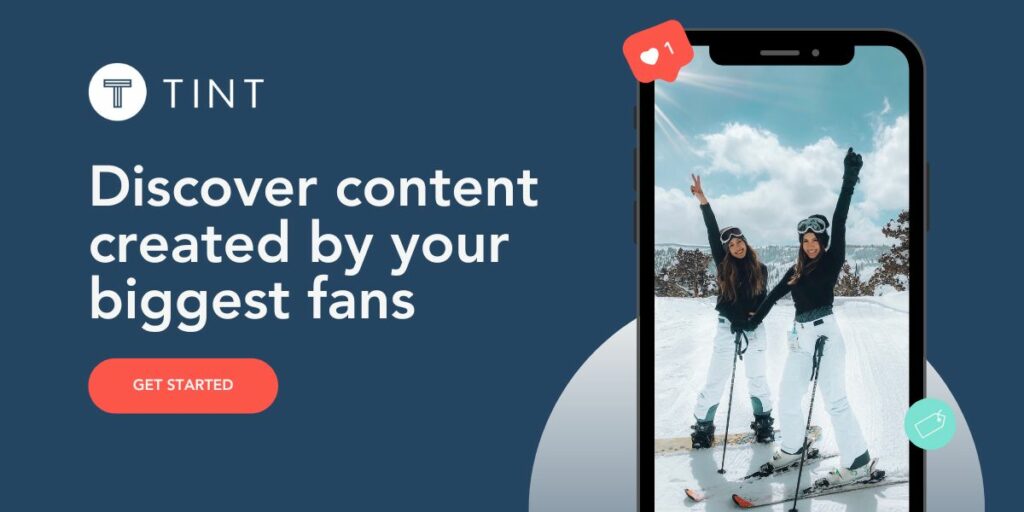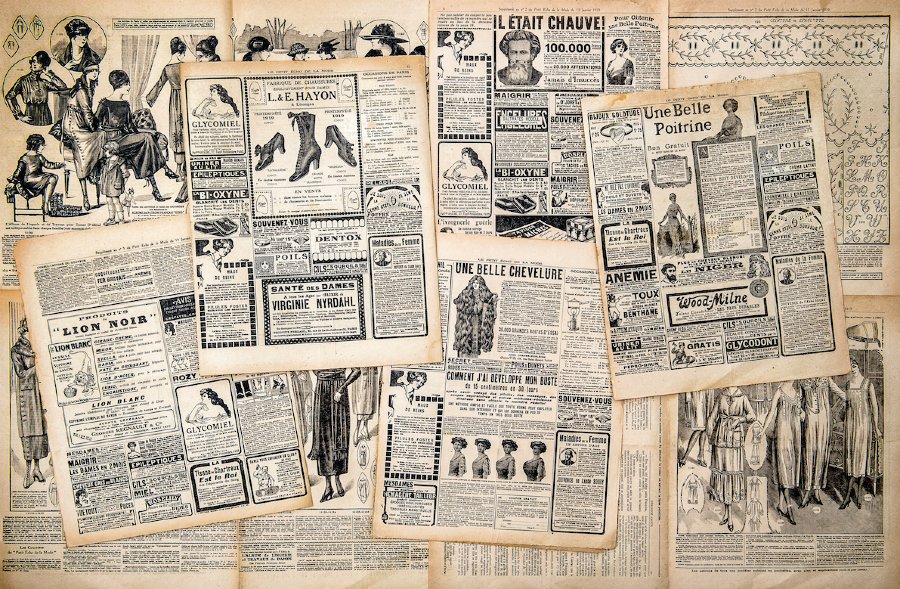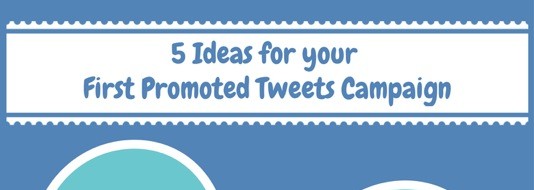The history of advertising has experienced several major milestones – think the emergence of the printing press in the 1440s or the huge impact of television.
Since its very first beginnings, which are thought to date back to steel carvings made by the ancient Egyptians, advertising has constantly had to adapt and change to suit new mediums and an increasingly savvy audience.
But there’s been one medium that’s had a bigger impact on advertising than anything before it.
The wonderful World Wide Web.
The internet has revolutionized advertising in the most astounding way. Not only has it changed the way ads are broadcasted, but it’s changed the way consumers act toward them.
The History of Advertising – Then: Traditional Ads
Let’s take things back to the pre-internet days.
The days when advertisements were carried out via cheesy infomercials on the radio, fuzzy old televisions, and billboards. This was the golden era of advertising – when the whole movement was considered a huge part of society – almost taking on a cultural status.
The first TV ad popped up on screens in 1941 in America – probably a lot later than you’d imagine. Before the Brooklyn Dodgers and the Philadelphia Phillies played each other, viewers saw a brief commercial for Bulova clocks and watches.
Such a small moment set the precedent for the next seventy years.
Back then, adverts were a staunch part of society. Despite the 50s being a tense decade for America during the Cold War, TV viewers felt optimistic and were beginning to loosen their purse strings as prosperity began to rise.
Characters were built around products to create a semblance of connection between viewers and brands (though this idea of a consumer connection didn’t become a priority until later), and famous faces were brought to sell everything from washing machines to cigarettes. This period provides some of the earliest signs of ambassador marketing.
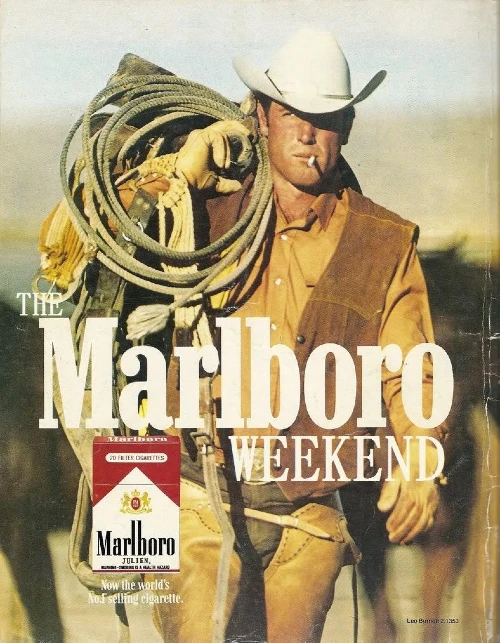
Take the Marlboro Man, for example, who became a recognizable cultural figure between the 1960s and 1990s. The aim was to turn filtered cigarettes from a feminine phenomenon to a more masculine one with the help of rugged cowboys and a stream of moody-looking men. Even today it’s considered one of the best advertisement campaigns of all time.
On television, products, and characters began to go hand and hand. Let’s take cereal as an example. Think Tony the Tiger and Frosted Flakes, or the Snap, Crackle, and Pop gnomes for Rice Krispies – both of which are still going strong today.
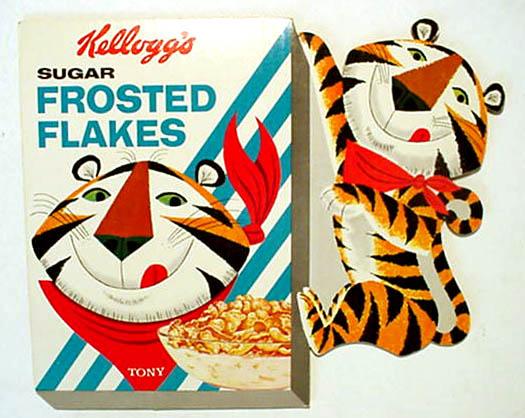
Despite the different characters and the vastly different selection of products that began to emerge, ads at this time had one purpose: to sell.
Yes, these characters were central to the ads and played a major part in creating an ad culture for consumers, but the product was always at the forefront.
It might have seemed like Tony the Tiger or the Marlboro Man were the epicenters of their aligning ad campaigns, but they simply served as a tool to sell, sell, sell.
Now: Different Motives
Today, the shift in the advertising world has seen the rise of other motives when it comes to commercials. Rather than the sell mentality, ads are now more focused on community building and brand awareness.
The History of Advertising – Now: The product is no longer the centerpiece.
Strong ads demonstrate the solution to the consumer’s problem (in a way that doesn’t feel sales-y).
Let’s consider an example that’s not too dissimilar to the character-led ads of the past. The Dairy Milk Gorilla ad in 2007 didn’t even show or mention Cadbury – the company it was supposed to be advertising.
Ad disaster? No, far from it.
The drum-playing gorilla (bashing along to Phil Collins In the Air Tonight and set against a purple background) got tongues wagging. It got people talking. This wasn’t a brazen attempt to flog more Cadbury chocolate bars. Instead, it was a strategic move that also played with brand color and psychology. It raised awareness of Cadbury and solidified it as a “cool” and “must-have” brand (because why else would everyone be talking about it?).
The simple nature of the ad lent itself perfectly to spoofs, one key way viewers can interact with a brand – almost like a back-and-forth dialogue. To date, there are more than 300 spoofs of the ad.
Taking things online, Lowe’s “Fix in Six” home improvement ads filmed through the 6-second Vine app aren’t overt. The genius videos show solutions to DIY problems in six seconds or less – not only are they fun to watch, but they are also actionable (basically, a dream combination).
The humorous take on home DIY problems has helped it create a friendly persona for its consumers, taking it a step away from “advertiser.” “Fix in Six” isn’t overtly linked to Lowe’s either. There’s no “hey, this is Lowe’s and you need to buy everything in this ad from us” spiel.
This idea of emphasizing a solution to consumers’ problems (like home DIY) instead of the product is becoming increasingly common. Brands have to work twice as hard to gain the trust of consumers in the internet world (which we’ll discuss more in a moment), so advertising has kind of taken on a two-step process:
- Helpful content that provides a solution to a problem.
- Consumers like helpful content and dig deeper to find out more about the brand (therefore building trust and a connection. Note that the consumer is actively digging to find out more themselves).
From a Passive to Active Consumers: The Biggest Changes in the History of Advertising
Our TV experiences are still littered with traditional ads, but the times are quickly a-changing. More change has happened in the past 20 years in advertising than in the previous 2,000 years – when ancient Egyptians would etch public notices into steel, right up until the 1980s when ads were a form of culture of sorts.
What has so drastically changed the ad landscape?
We’re living in the ad-blocker age.
Audiences are actively choosing not to have to sit through commercials (or be bombarded with ads while they browse the internet).
We have to look at the rise of apps that stop ads from showing up – and the emergence of pay-to-stream platforms like Netflix. Yep, people are actively choosing to pay to not have to sit through ads.
This new trend of saying no to ads is thought to have cost publishers up to $22 billion (yes, billion) in revenue per year – and increasing – so it’s not to be taken lightly.
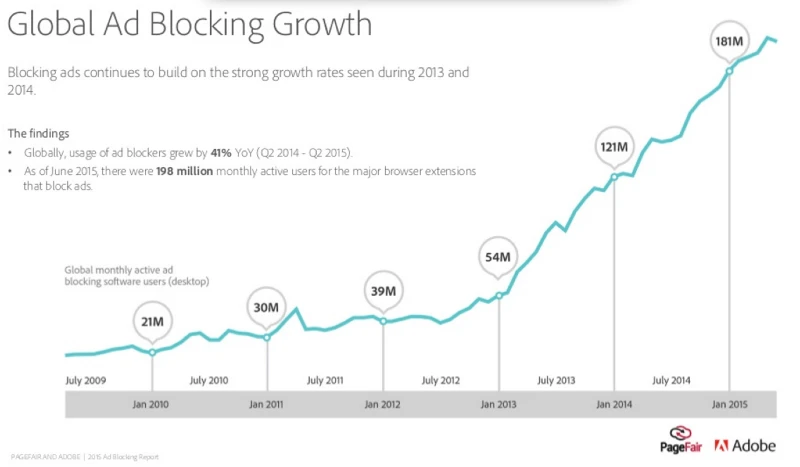
If this isn’t a hint to advertisers that they need to change tack (if they haven’t already), I don’t know what is.
Consumers are less trusting of commercials
Millennials are the demographic of the moment, but they’re also the most skeptical when it comes to ads. According to TINT’s State of Social & User-Generated Content report, nearly seventy-six percent (76%) of consumers have used social media to search for or discover products, brands, and experiences.
Now, this is where the solution comes before the product.
Brands have to prove themselves before consumers will even consider buying from them.
It’s a far cry from the days of the Marlboro Man in the history of advertising, who just had to sit looking moody on a horse (just imagine what he’d have to do now to build trust).
The historical rise of user-generated content
To build trust with consumers, brands are partnering up with people brands want to purchase from them.
Essentially, consumers have become a part of advertising, rather than passive onlookers.
Brands should focus more on creating a community and getting consumers on board to help sell their products (which is why brands and consumers value sites like TripAdvisor so much).
Take GoPro, for example, a hugely popular brand that regularly pumps out user-generated content for its consumers. Instead of creating ads that simply shout “buy our awesome product”, they let their customers do the talking.
Or pelicans, in this case:
And then there’s Polaroid, a company that promotes user-generated content using TINT on their website rather than ads. They encourage consumers to get involved by asking them to carry out tasks, like “snap a photo with the new Taylor Swift album for a chance to win the Polaroid 22300 camera”.
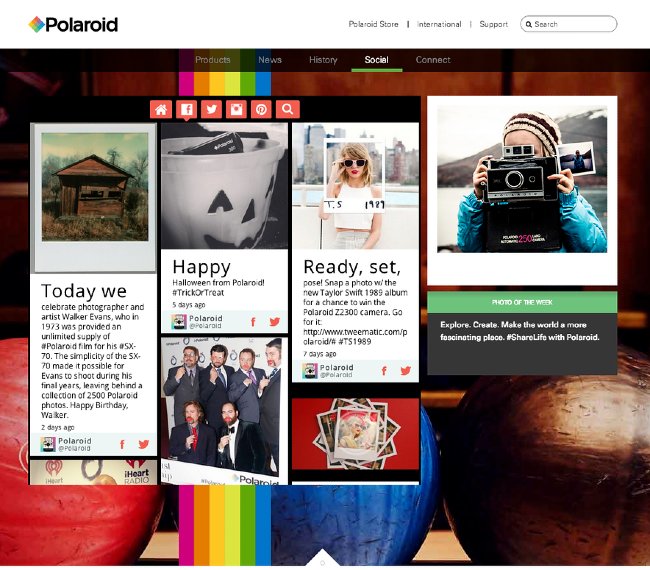
Why does this work? Because people trust other people, not brands.
The need for loyal followers over one-time buyers
This brings me to the final biggest change.
Because brands are increasingly becoming aware that people trust other people, not brands (we’re all getting wise to that trick), they’re shifting their focus from one-time buyers to creating a loyal following.
Why? Because a loyal following sells products all by itself. A group of raving fans is one of the best advertising tools a company can have – they will shout from the rooftops about a product without any pushing.
Take Patagonia clothing, for example. One of their most famous ads does something that would have been completely bizarre back in the Marlboro Man days. They actively encourage their buyers to send back their clothing to get it fixed, rather than buy a brand-new item
Surely this lowers sales? Actually, it serves two very clever purposes.
Firstly, it creates a loyal audience because their primary aim is to make sure their customers are happy – not selling more products.
Secondly, it builds trust.
Think about it logically: if a brand is encouraging you to send back a product if it’s broken, you’re more likely to think it won’t break, because why the heck would they promise to do that if they’re selling a shoddy product?
With evidence clearly showing that audiences are doing everything in they can to avoid the dreaded ad, it’s obvious that they have more power in what they do and don’t choose to buy into it.
The history of advertising has taken it from the etchings of ancient Egypt, through the emergence of the printing press, through the golden age of cheesy infomercials and character-led sales pitches, to today, where ads are quickly being replaced by organic ways to build trust and community.
Marlboro Man might have been the man of the moment in the 1960s, but what impact would he have now in a time where delivering solutions comes way, way above the sell, sell, sell mentality?
Would he fare well with audiences that favor knowledge and authenticity? Who knows: that would be down to the consumer to decide.
Community and User-Generated Content are the future of advertising.
Learn more about how TINT can elevate your marketing efforts with beautiful, authentic content created by your biggest fans. Request a personalized demo
